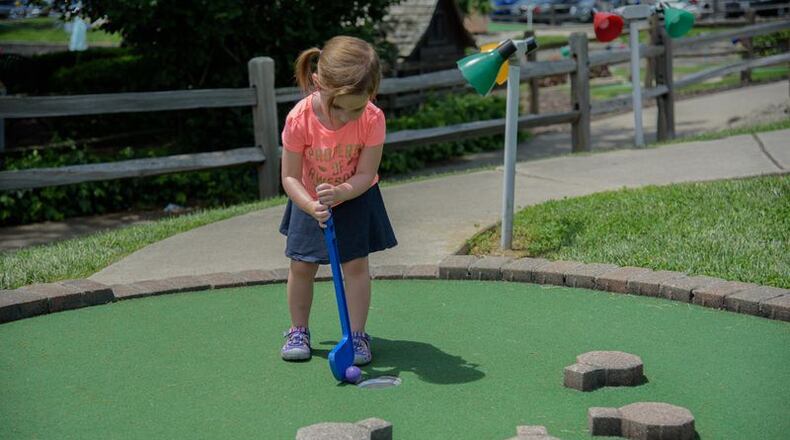The hospital staff worked with Dr. Sherman Alter, chief of infectious disease at Dayton Children’s, to provide recommendations on risk levels for various activities that kids and families might enjoy doing.
Activities listed range from low risk, such as biking, to high risk, such as visiting a trampoline park.
Low -risk activities
- Family camping trip
- Getting takeout from your child’s favorite restaurant
- Miniature golf
- Hiking
- Biking
Low-medium risk activities
- Coming to Dayton Children’s
- Visiting your pediatrician
- Splashpads
- Playing at an outdoor playground
- Outdoor playdates
Medium risk activities
- Sending kids to child care or summer camp
- Going to a public pool
- Backyard barbecue with two to three families
- Going to the zoo, museums and aquariums
- Non-contact team sports like baseball
Medium-high risk activities
- Visiting with friends from out-of-town/state
- Indoor birthday party with multiple families
- Indoor playdates
- Graduation party with a large group
- Visiting with grandparents indoors
High risk
- Amusement parks
- Movie theaters
- Bounce houses
- Trampoline parks
- Vacation with air travel
Additional safety precautions
Dr. Alter, also a clinical professor of pediatrics at Wright State University Boonshoft School of Medicine, recommends that families ask about safety measures at public places before participating in any events, that they practice social distancing, wash hands frequently and that children 2 and older wear a mask when appropriate. Alter’s mask recommendation is more stringent than the statewide mask mandate that requires masks for children 10 and older when inside public places or unable to social distance outdoors.
According to the Centers for Disease Control, the risk of an activity depends on many factors, such as:
- Is COVID-19 spreading in your community?
- Will you have potential close contact with someone who is sick or anyone who is not wearing a face covering (and may be asymptomatic)?
- Are you at increased risk of severe illness?
- Do you take everyday actions to protect yourself from COVID-19?
The CDC also warns that interacting with more people raises your risk and being in a group with people who aren’t social distancing or wearing cloth face coverings increases your risk. The closer you are to people who may be infected, the higher the risk. Indoor spaces are riskier than outdoor spaces where it might be harder to keep people apart and there’s less ventilation. The CDC urges people to stay home if feeling sick, to wear face masks in public and when around people who don’t live in your household, stay 6 feet away from others and wash your hands with soap and water for at least 20 seconds before and after an activity and to bring hand sanitizer with you.
About the Author

